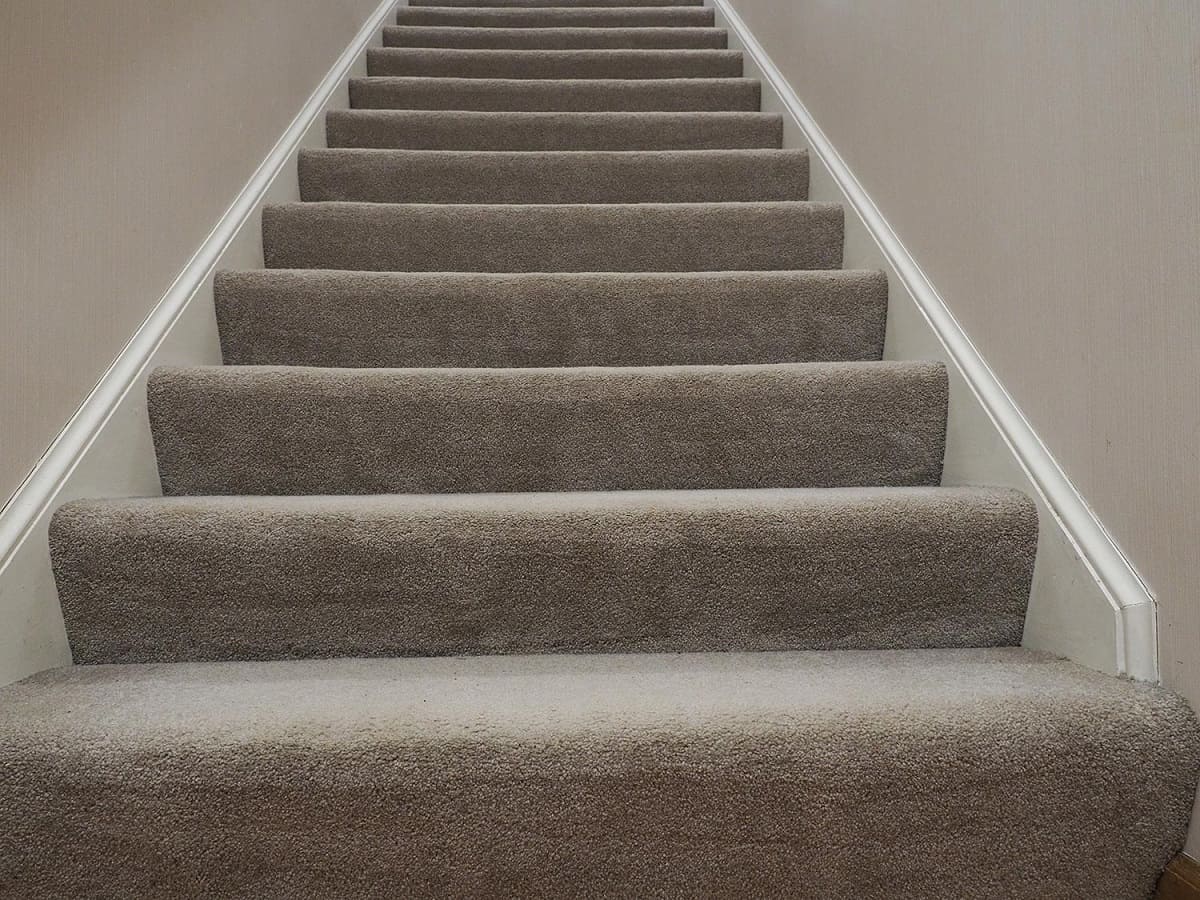

Articles
How Much To Carpet Stairs
Modified: January 19, 2024
Find out how much it costs to carpet stairs in this informative article. Get expert advice, tips, and recommendations for your stair carpeting project.
(Many of the links in this article redirect to a specific reviewed product. Your purchase of these products through affiliate links helps to generate commission for Storables.com, at no extra cost. Learn more)
Introduction
Welcome to our comprehensive guide on calculating the cost of carpeting stairs on a single level. Carpeting stairs can add warmth, comfort, and style to your home, but it’s important to understand the factors that affect the overall cost before embarking on this project. In this article, we will outline the key considerations and steps involved in determining the cost of carpeting your stairs.
When it comes to carpeting stairs, several factors can influence the overall cost. These include the size of the staircase, the type and quality of carpeting you choose, the complexity of the installation process, and any additional expenses that may arise during the project. By understanding these factors, you can make an informed decision and budget accordingly.
Measuring and estimating the dimensions of your stairs is crucial for accurate cost calculations. Stairs come in various shapes and sizes, so it’s essential to measure the width, length, and height of each step, as well as the overall width of the staircase. This information will help you determine the amount of carpeting material required and provide a more precise estimate of the cost.
When it comes to carpet materials, there are various options available for stair carpeting. The type of carpet you choose will depend on your personal preferences, budget, and durability requirements. Popular choices for stair carpeting include nylon, polyester, and wool. Each material varies in price and performance, so it’s essential to consider these factors when making your decision.
The cost of carpeting materials is a significant factor when calculating the overall expense. The price of carpeting is typically measured per square foot or square yard, so knowing the dimensions of your stairs will help you determine the amount of carpeting needed and estimate the cost accordingly. Additionally, other materials such as carpet padding, adhesive, and stair nosing should also be included in your budget.
Key Takeaways:
- Accurate measurements, budget-friendly carpet options, and DIY installation can help reduce the cost of carpeting stairs while maintaining quality and style. Consider multiple quotes and minimize additional expenses for a successful project.
- Understanding the breakdown of costs, comparing flooring options, and implementing cost-saving strategies are essential for budgeting effectively and making informed decisions when carpeting stairs. Balance cost and quality for long-lasting results.
Read more: How Much Carpet Runner For 13 Stairs
Factors Affecting the Cost
Several factors can influence the overall cost of carpeting stairs. Understanding these factors will help you plan your budget and make informed decisions about your project. Here are some of the key factors to consider:
Size of the Staircase
The size of your staircase plays a significant role in determining the cost of carpeting. The length, width, and height of the stairs will impact the amount of carpeting material required and the complexity of the installation process. Generally, larger staircases will require more carpeting and may involve additional labor, which can increase the overall cost.
Type and Quality of Carpeting
The type and quality of carpeting you choose will also affect the cost. Different carpet materials come in various price ranges, so it’s essential to consider your budget and the durability and style you desire. Nylon carpets are typically more affordable, while wool carpets are known for their luxurious feel but come at a higher price point. It’s important to find the right balance between cost and quality to ensure your investment lasts for years to come.
Installation Complexity
The complexity of the installation process can impact the overall cost. If your staircase has unusual angles, curves, or landings, it may require additional time and effort to properly install the carpeting. Moreover, if the stairs have existing carpet that needs to be removed or if there are any repairs or preparation work required, these factors can add to the labor costs.
Read more: How Much Carpet Do I Need For 13 Stairs
Additional Expenses
Aside from the cost of the carpeting material and labor, there may be additional expenses to consider. These can include carpet padding, which provides added cushioning and noise reduction, as well as adhesives or tapes used for securing the carpet to the stairs. You may also need to budget for stair nosing, which protects the edges of the steps and adds a finishing touch to the installation.
By taking into account these factors, you can get a better idea of the overall cost of carpeting your stairs. It’s important to assess the unique characteristics of your staircase, choose the right carpeting material for your needs, and account for any additional expenses that may arise during the project. Doing so will help you plan your budget effectively and ensure a successful and aesthetically pleasing outcome.
Measurement and Estimation
To accurately calculate the cost of carpeting your stairs, it’s crucial to measure and estimate the dimensions of the staircase correctly. This will help you determine the amount of carpeting material needed and provide a more precise cost estimate. Here’s a step-by-step guide on measuring and estimating your stairs:
Step 1: Measure the Width
Using a tape measure, measure the width of each step on your staircase. Start at the widest point, which is usually the tread, and measure from one side to the other. Write down the measurement for each step, as some stairs may vary in width.
Step 2: Measure the Length
Next, measure the length of each step from the front of the tread to the back of the riser. For curved or angled stairs, measure along the edge where the carpet will be installed. Again, record the measurements for each step as they may differ.
Read more: How To Fix Carpet On Stairs
Step 3: Measure the Height
Measure the height of the riser on each step. Start at the bottom of the tread and measure up to the top of the next riser. Repeat this process for each step and take note of the measurements.
Step 4: Measure the Width of the Staircase
Measure the overall width of the staircase by starting at one wall and measuring across to the opposite wall. This will give you an idea of how much carpeting material you will need to cover the entire width of the stairs, including any landings or larger platforms.
Step 5: Calculate the Total Area
To estimate the amount of carpeting material required, calculate the total area by multiplying the width of each step by the length. Then, add up the measurements for all steps to get the total area in square feet or square yards. Remember to account for any landings or wider sections of the staircase as well.
Step 6: Account for Wastage and Pattern Matching
It’s important to factor in some extra carpeting material to account for wastage and ensure proper pattern matching. This is particularly crucial if you have a patterned carpet or if your stairs have unusual shapes or angles. As a general guideline, adding 10% to 15% to your total area can help accommodate these factors.
By following these measurement and estimation steps, you can obtain accurate dimensions for your staircase and determine the amount of carpeting material needed. This will enable you to make informed decisions about your budget and ensure a successful carpeting project for your stairs.
Read more: How To Clean Carpet On Stairs
Types of Carpet
When it comes to selecting carpet for your staircase, there are various types of carpet materials to choose from. Each type offers different characteristics in terms of durability, comfort, and price range. Understanding these options will help you make an informed decision based on your preferences and budget. Here are some common types of carpet materials for stair carpeting:
Nylon
Nylon is one of the most popular choices for stair carpeting. It is known for its durability, resistance to stains, and ease of maintenance. Nylon carpets are available in a wide range of styles and colors, making them versatile for different design preferences. Additionally, nylon carpets are generally more affordable compared to other materials, making them a cost-effective option for stair carpeting.
Polyester
Polyester carpets are another option to consider for stair carpeting. They are known for their softness and luxurious feel underfoot. Polyester carpets come in a variety of textures and colors, providing plenty of design options for your staircase. While polyester may not be as durable as nylon, it is well-suited for low-traffic areas like stairs. Polyester carpets are typically more budget-friendly, making them an attractive choice for homeowners seeking an affordable and comfortable option.
Wool
If you’re looking for a premium and luxurious material for your stair carpeting, wool is an excellent choice. Wool carpets are known for their natural resilience, durability, and luxurious feel. They have excellent stain resistance properties and are naturally flame-retardant. However, wool carpets tend to be more expensive compared to synthetic materials. Despite the higher price, wool carpets are long-lasting and can add an elegant touch to your staircase.
Read more: How To Shampoo A Carpet On Stairs
Blend of Fibers
Some carpets are made from a blend of different fibers, such as nylon and polyester or wool and nylon. These blends offer a combination of desirable characteristics, such as durability, softness, and affordability. Blended carpets can be a good option for stair carpeting, as they provide a balance between performance and cost-effectiveness.
It’s important to consider your lifestyle, the amount of foot traffic on your staircase, and your budget when choosing the type of carpet for your stairs. Keep in mind that the price of carpet materials can vary depending on factors such as brand, quality, and design. It’s always a good idea to explore different options, seek professional advice, and compare prices to find the best-suited carpet material for your needs.
Cost of Carpeting Materials
When considering the cost of carpeting your stairs, it’s essential to understand the breakdown of expenses associated with purchasing the necessary materials. These costs will vary depending on factors such as the type of carpet material chosen, the size of your staircase, and any additional accessories required. Here is a breakdown of the costs associated with carpeting materials:
Carpeting Material
The cost of the carpeting material itself will be a significant portion of your expenses. The price of carpeting is typically measured per square foot or square yard. The cost will depend on the type of carpet material chosen, such as nylon, polyester, or wool, as well as the quality and brand. As a general guideline, nylon carpets tend to be more affordable, polyester carpets fall in a mid-range price point, while wool carpets are generally the most expensive option.
Carpet Padding
Carpet padding, also known as underlay, is a layer of cushioning that goes beneath the carpeting. It provides added comfort, enhances insulation, and helps to extend the lifespan of the carpet. The cost of carpet padding will vary depending on the type and thickness of the padding chosen. Foam padding is the most common and affordable option, while options like rubber or felt padding may come at a higher cost.
Read more: How To Remove Carpet On Stairs
Adhesive or Tape
Depending on the installation method and carpet type, you may need adhesive or tape to secure the carpeting to the stairs. Adhesive options range from glue-down adhesive for permanent installations to double-sided carpet tape for temporary or less permanent installations. The cost will depend on the type and brand of adhesive or tape selected.
Stair Nosing
Stair nosing is an important component that covers the edges of the steps, providing protection and a finished look. It can also help improve safety by reducing the risk of slips and falls. Stair nosing comes in various materials and finishes, such as metal, wood, or PVC. The cost of stair nosing will depend on the material and design chosen.
Remember to factor in taxes, shipping fees, and any discounts or promotions that may be applicable when calculating the total cost of your carpeting materials. Additionally, it’s always a good idea to consult with reputable suppliers or contractors to get accurate pricing information and explore any financing options that may be available.
By understanding the breakdown of costs associated with carpeting materials, you’ll be better equipped to budget for your project and make informed decisions about the materials that best suit your needs and preferences.
Labor Costs
When budgeting for carpeting stairs, it’s important to consider the labor costs involved. Unless you have the necessary skills and experience, it is recommended to hire a professional to ensure a proper and professional installation. Here is a discussion of the average labor costs you can expect when carpeting stairs:
Professional Installation
Hiring a professional installer is the most common route for carpeting stairs, especially if you want a high-quality and seamless finish. Professional installers have the knowledge, expertise, and equipment to ensure a proper installation that meets industry standards. The labor cost for professional installation will depend on various factors, such as the size and complexity of your staircase and your geographical location. On average, you can expect to pay anywhere from $2 to $5 per square foot for installation fees.
Read more: How To Measure A Carpet For Stairs
Removal and Disposal
If your stairs have existing carpet, you may need to consider the labor and cost associated with removing and disposing of the old carpet. This is especially important if the previous carpet is worn or damaged. The labor cost for removal and disposal will depend on the complexity of the project and the amount of carpeting to be removed. On average, you can expect to pay an additional fee of around $0.50 to $1.50 per square foot for removal and disposal.
Additional Services
Depending on the condition of your stairs and any repairs or preparations required, there may be additional labor costs involved. For example, if your stairs need to be leveled or if subfloor repairs are necessary, these additional services will incur extra labor fees. It’s important to discuss these potential services with your installer to understand the associated costs upfront.
When hiring a professional installer, it’s essential to obtain multiple quotes and compare prices to ensure you’re getting a fair and competitive rate. While labor costs can add to the overall expense of carpeting your stairs, investing in professional installation can save you time, effort, and potential issues down the line.
If you have the necessary skills and experience, you may choose to install the carpeting yourself to save on labor costs. However, keep in mind that this can be a challenging task, especially for more complex staircases. Improper installation can lead to issues such as loose carpeting, uneven seams, or premature wear and tear.
Ultimately, the labor costs involved in carpeting stairs will depend on various factors. It’s essential to discuss your specific project requirements with a professional installer to get an accurate estimate and understand the services included. By considering labor costs in your budget, you can ensure a successful and professional installation that enhances the beauty and functionality of your staircase.
Additional Expenses to Consider
When budgeting for carpeting stairs, it’s important to account for any additional expenses that may arise beyond just the cost of materials and labor. These additional expenses can vary depending on factors such as the condition of your stairs, the complexity of the installation, and any specific requirements you have. Here are some additional expenses to consider:
Stair Preparation
Before carpeting your stairs, you may need to prepare the surface. This can include removing any existing carpeting or flooring materials, repairing any damaged or uneven areas, and ensuring that the stairs are clean and dry. The cost of stair preparation will depend on the extent of the required work and whether you choose to do it yourself or hire a professional to handle it.
Read more: How To Protect Carpeted Stairs
Trimming and Finishing
Trimming and finishing refer to the process of ensuring a neat and polished appearance for your carpeted stairs. This can involve trimming excess carpeting along the edges, installing stair nosing or transition strips, and addressing any visible seams or gaps. The cost of trimming and finishing will depend on the materials used and the complexity of the finishing details. It’s recommended to consult with a professional installer for the best results.
Furniture Removal and Replacement
If your staircase is located in an area with furniture, you may need to temporarily remove and later replace the furniture during the carpeting process. This can involve additional labor and potential costs, such as renting storage space or hiring movers to assist with furniture removal and replacement. It’s important to consider these logistical aspects and plan accordingly to avoid any inconvenience or damage to your belongings.
Upgrades and Add-Ons
During the carpeting process, you may decide to add upgrades or additional features to enhance the functionality and aesthetics of your stairs. This can include adding extra layers of padding for added cushioning, choosing a higher-grade carpet material for increased durability, or opting for decorative elements such as stair runners or custom trim. These upgrades and add-ons can increase the overall cost, so it’s important to budget for them accordingly.
Maintenance and Cleaning
Once your stairs are carpeted, it’s essential to consider ongoing maintenance and cleaning. This can include investing in cleaning products specifically designed for carpet, scheduling professional carpet cleaning services, and regular vacuuming. While these expenses may not be immediate, they are important for preserving the quality and longevity of your carpeted stairs in the long run.
By identifying these additional expenses and incorporating them into your budget, you can ensure a more accurate estimation of the total cost of carpeting your stairs. Proper planning and consideration of these factors will help you avoid any unexpected financial surprises and ensure a smooth and successful carpeting project.
Read more: How To Cover A Carpet On Stairs
Cost Comparison
When it comes to choosing the flooring for your staircase, carpeting is just one of several options available. It’s important to consider the cost implications of different flooring options to make an informed decision that aligns with your budget. Here is a comparison of the cost of carpeting stairs to other flooring options for staircases:
Carpeting
Carpeting is a popular choice for staircases due to its warmth, comfort, and noise-reducing properties. The cost of carpeting stairs can vary depending on factors such as the type of carpet material chosen, the size of your staircase, and any additional accessories required. On average, the cost of carpeting stairs can range from $3 to $10 per square foot, including materials and installation.
Hardwood Flooring
Hardwood flooring is a timeless and elegant choice for staircases. While it offers durability and easy maintenance, it tends to be more expensive than carpeting. The cost of hardwood flooring for stairs can range from $8 to $15 per square foot, excluding installation. Additionally, installation costs can add to the overall expense, as it requires precision and expertise to ensure a proper fit and finish.
Laminate Flooring
Laminate flooring is a cost-effective alternative to hardwood flooring. It mimics the look of wood or other materials while offering durability and easy maintenance. The cost of laminate flooring for stairs can range from $3 to $8 per square foot, excluding installation. With a wide range of styles and designs available, laminate flooring can provide an affordable and stylish option for staircases.
Read more: How To Measure For Carpet On Stairs
Vinyl Flooring
Vinyl flooring is known for its versatility, affordability, and durability. It offers a wide range of styles, including options that resemble wood, stone, or tile. Vinyl flooring for stairs can range from $2 to $7 per square foot, excluding installation. It’s a popular choice for staircases due to its water resistance and ease of maintenance.
Ceramic or Porcelain Tile
Ceramic or porcelain tile can provide a sleek and stylish look for staircases. These materials are known for their durability and water resistance. However, the cost of ceramic or porcelain tile can be higher than other flooring options. The average cost of ceramic or porcelain tile for stairs can range from $5 to $15 per square foot, excluding installation, which can add to the overall expense.
It’s important to note that these cost ranges are approximate and can vary depending on factors such as the quality of the materials, the complexity of the installation, and regional pricing differences. It’s always advisable to obtain multiple quotes from reputable suppliers and contractors to get accurate pricing information for your specific project.
When comparing the cost of carpeting stairs to other flooring options, it’s important to consider not only the upfront costs but also factors such as maintenance, durability, and aesthetic appeal. Each flooring option has its pros and cons, so it’s crucial to choose the one that best suits your needs, budget, and personal preferences.
Tips for Reducing Costs
Carpeting stairs on a single level doesn’t have to break the bank. With careful planning and consideration, you can minimize expenses and stay within your budget. Here are some helpful tips to reduce costs when carpeting stairs:
1. Measure and Plan Accurately
Ensure accurate measurements of your stairs to minimize wastage and avoid purchasing more materials than necessary. Plan the layout carefully to optimize the use of the carpeting material and reduce excess cutting and trimming.
Read more: How To Add Carpet To Stairs
2. Consider Affordable Carpet Options
Explore budget-friendly carpet options that still offer durability and style. Nylon carpets, for example, are often more affordable than wool carpets but provide similar performance. Look for sales, discounts, or remnants that can help you save on the cost of carpeting materials.
3. DIY Installation
If you have experience with carpet installation or are willing to learn, consider handling the installation yourself. This can save on labor costs, but ensure you have the necessary tools, knowledge, and time to complete the project correctly.
4. Remove Existing Carpeting Yourself
If there is existing carpeting on your stairs that needs to be removed, consider taking on this task yourself rather than paying for professional removal services. This can help reduce labor costs and potentially save you money.
5. Shop Around for Quotes
Obtain quotes from multiple carpet suppliers and professional installers to compare prices and find the best deals. Don’t hesitate to negotiate or ask about any ongoing promotions or discounts that may be available.
Read more: How To Put Carpet On Stairs
6. Opt for Standard Carpet Padding
While carpet padding is important for comfort and noise reduction, choosing a standard-grade option can help reduce costs compared to premium or high-density padding. Ensure the chosen padding meets your needs while staying within your budget.
7. Minimize Additional Expenses
Consider which additional expenses are necessary and which can be minimized or eliminated. For example, if your stairs don’t require extensive preparation or repairs, you may be able to save on labor costs by opting out of these additional services.
8. Proper Maintenance
Take proactive measures to maintain your carpeted stairs properly. Regular vacuuming, spot cleaning, and addressing spills promptly can help extend the lifespan of your carpeting, reducing the need for frequent replacements or costly repairs.
By following these tips, you can effectively reduce the costs associated with carpeting stairs on a single level. Remember, striking a balance between cost and quality is crucial, so focus on finding affordable options that still meet your desired aesthetic and performance requirements.
Conclusion
In conclusion, calculating the cost of carpeting stairs on a single level entails considering several factors that influence the overall expense. By understanding these factors and implementing some cost-saving strategies, you can budget effectively and make informed decisions. Let’s recap the key points discussed:
We started by discussing the factors affecting the cost, such as the size of the staircase, the type and quality of carpeting, the complexity of the installation, and any additional expenses like padding and stair nosing.
Next, we provided a guide on measuring and estimating the dimensions of the stairs, emphasizing the importance of accurate measurements for precise cost calculations.
We then explored different types of carpet materials, including nylon, polyester, and wool, and their corresponding price ranges. Understanding these options allows you to find the right balance between cost and quality.
Breaking down the cost of carpeting materials, we highlighted the costs of carpeting material itself, padding, adhesives, and stair nosing.
Labor costs were discussed, emphasizing the average fees associated with professional installation, which provides a high-quality finish that meets industry standards. We also touched upon the costs of removal and disposal, as well as potential additional services required.
Identifying additional expenses, we highlighted factors such as stair preparation, trimming and finishing, furniture removal, and maintenance and cleaning.
We then compared the cost of carpeting stairs to other flooring options, such as hardwood, laminate, vinyl, and ceramic or porcelain tile, noting that each has its own price range and considerations.
To help minimize costs, we provided valuable tips, including accurate measurement and planning, considering affordable carpet options, DIY installation, shopping around for quotes, opting for standard carpet padding, minimizing additional expenses, and proper maintenance.
In the end, reducing the cost of carpeting stairs requires careful planning, research, and consideration of your specific needs and preferences. By implementing these tips and strategies, you can achieve a successful and cost-effective carpeting project that enhances the beauty and functionality of your stairs.
Remember, while cost is an important aspect, it’s essential to strike the right balance between budget and quality to ensure long-lasting, comfortable, and aesthetically pleasing carpeting for your stairs.
Frequently Asked Questions about How Much To Carpet Stairs
Was this page helpful?
At Storables.com, we guarantee accurate and reliable information. Our content, validated by Expert Board Contributors, is crafted following stringent Editorial Policies. We're committed to providing you with well-researched, expert-backed insights for all your informational needs.
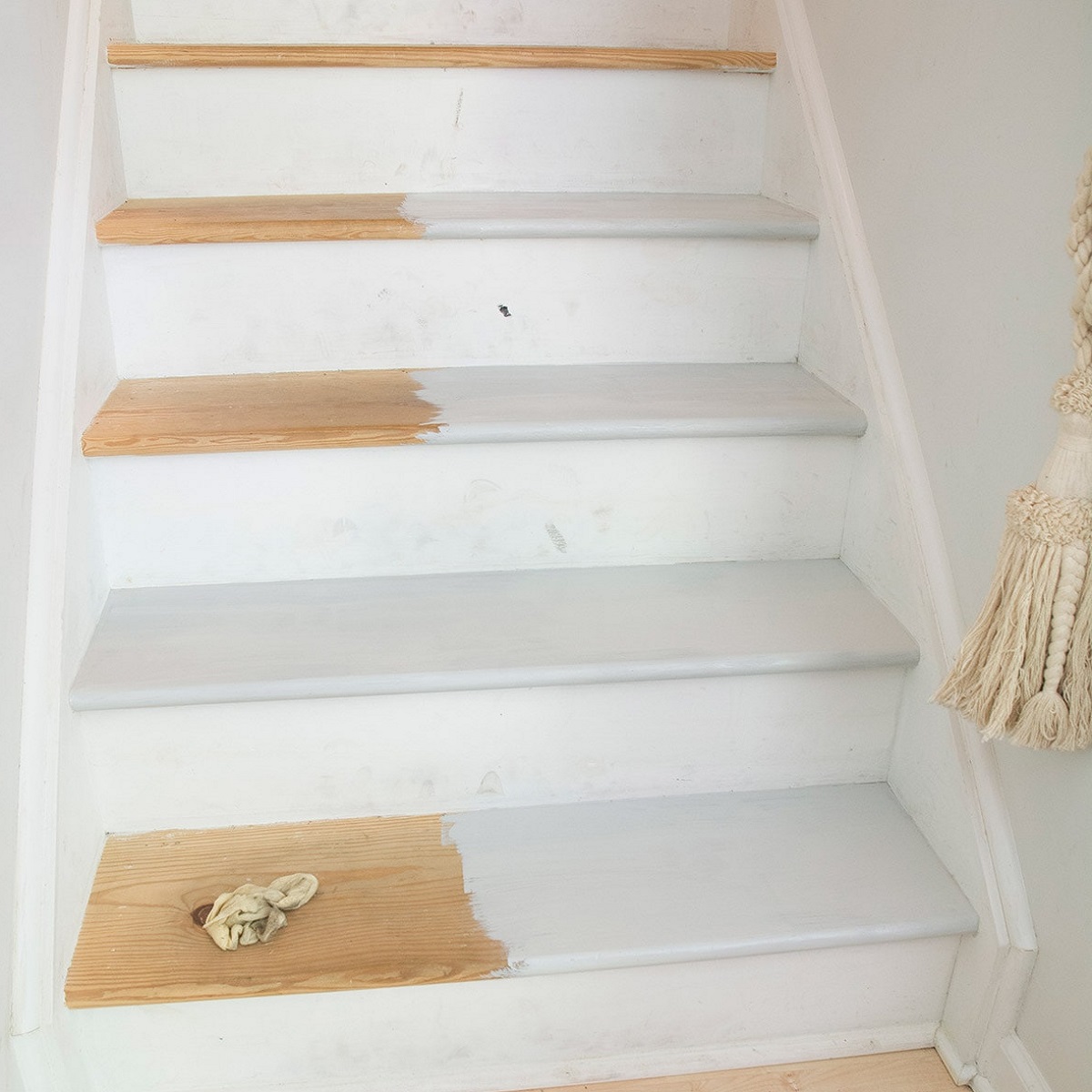
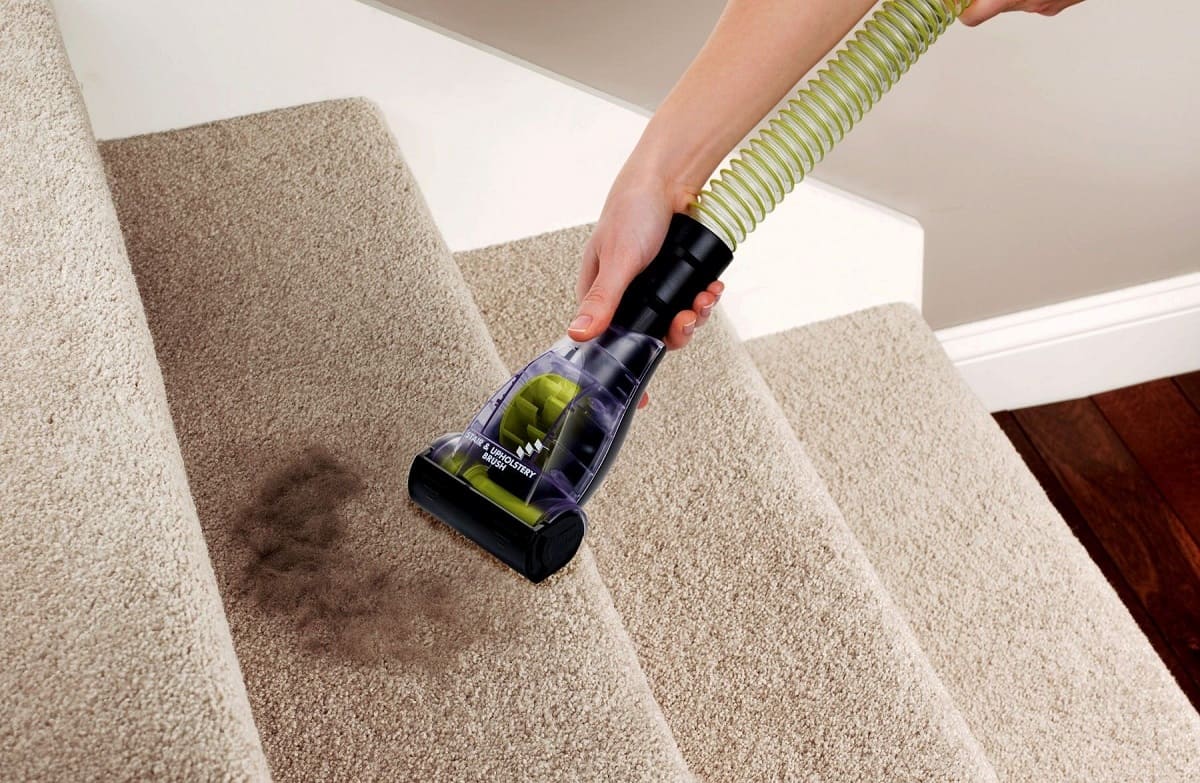
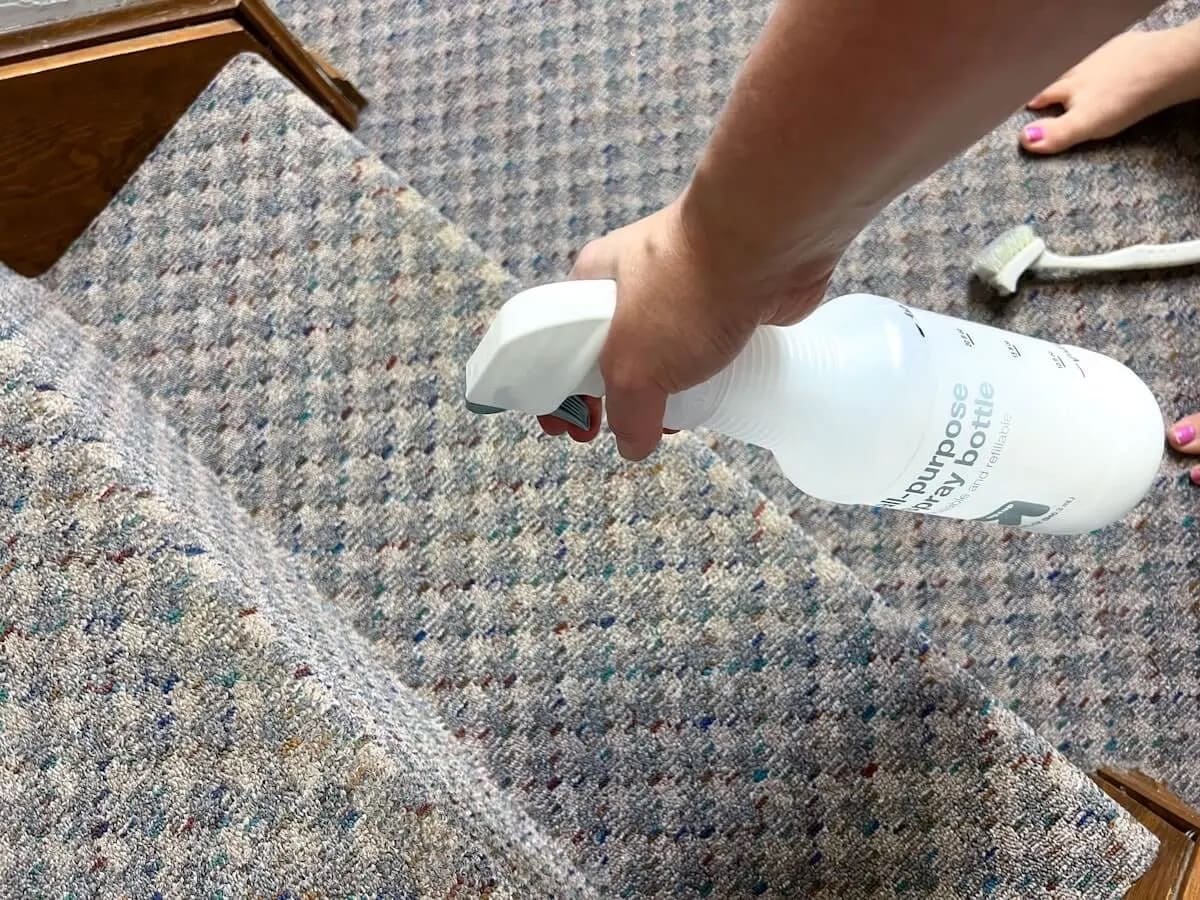
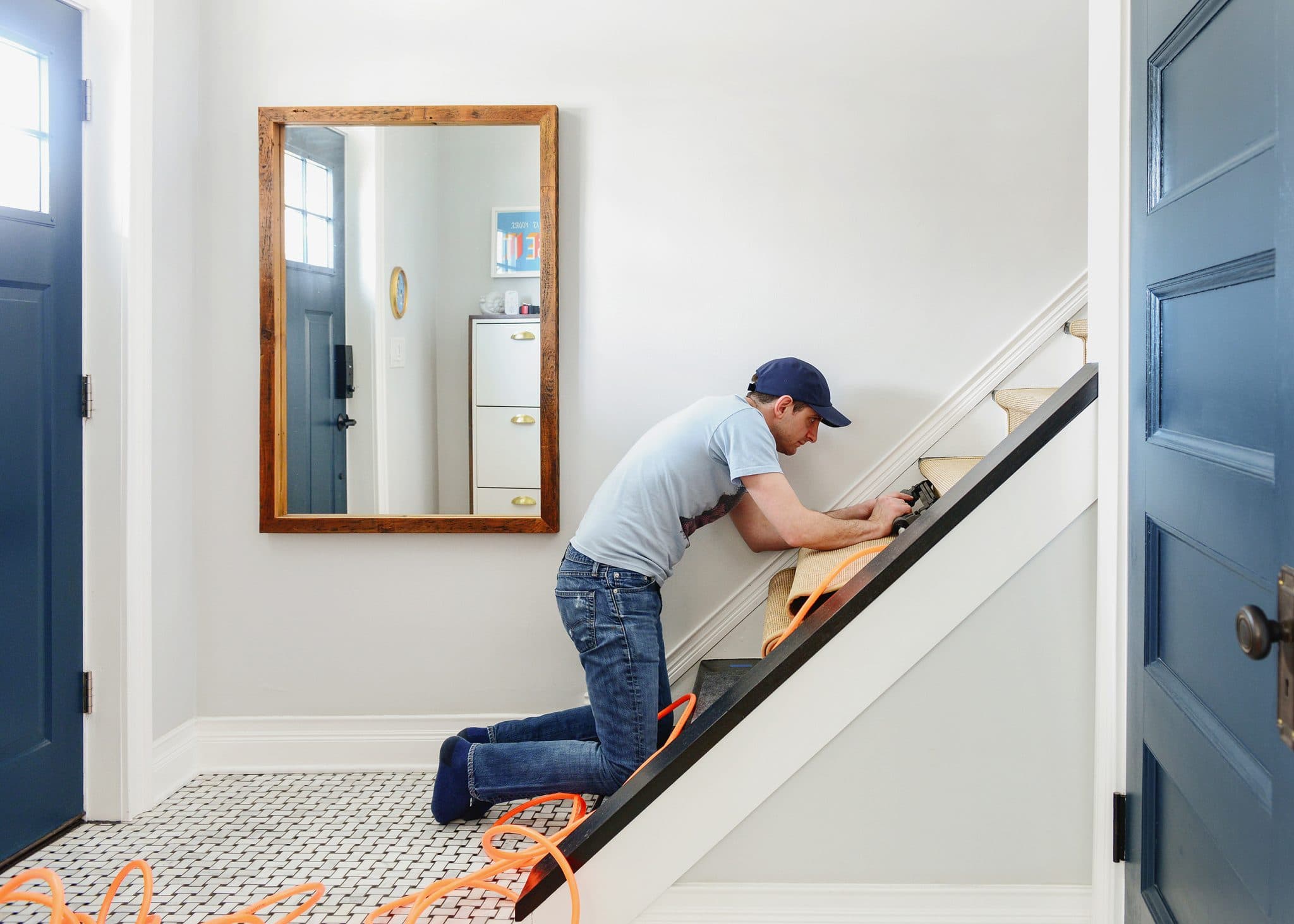

0 thoughts on “How Much To Carpet Stairs”